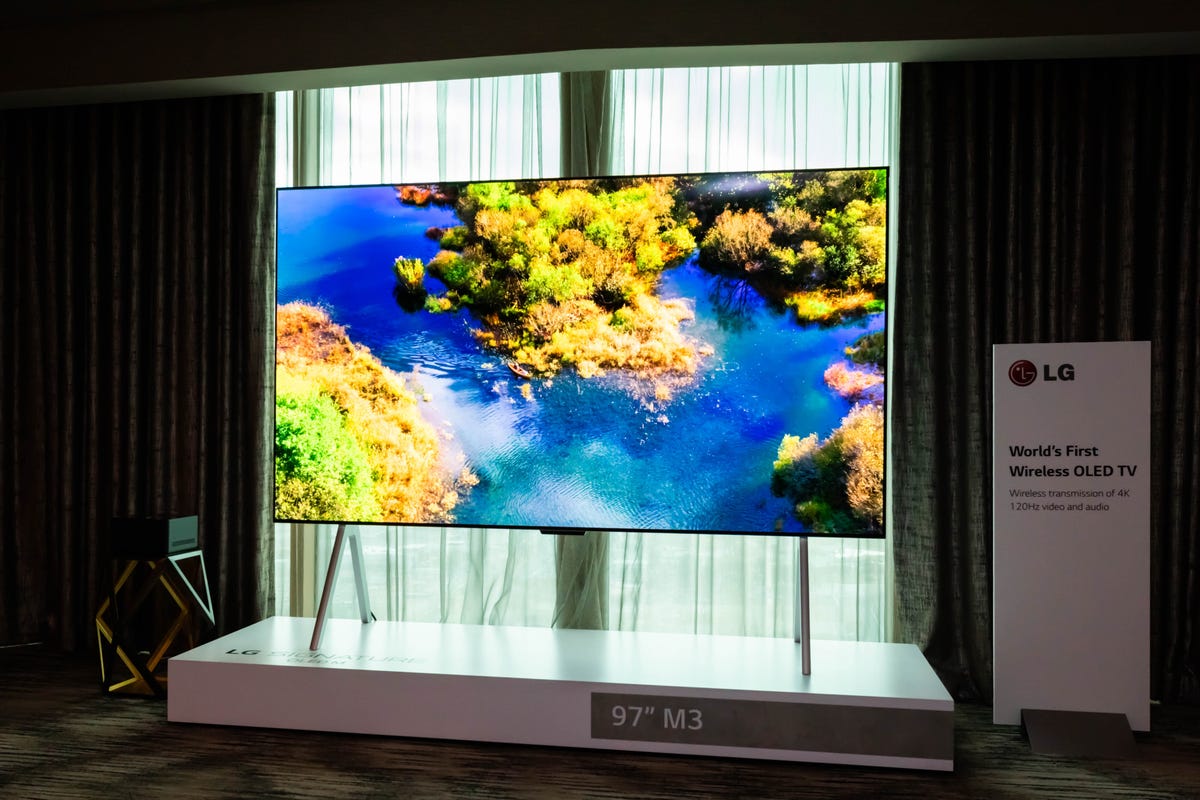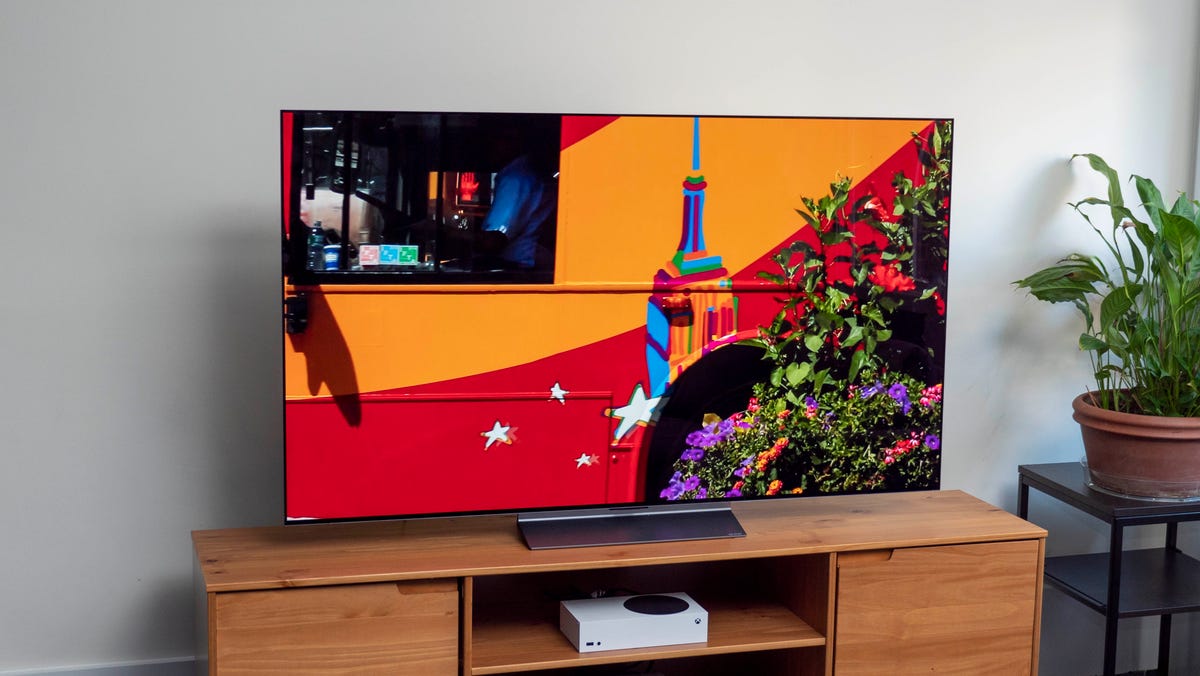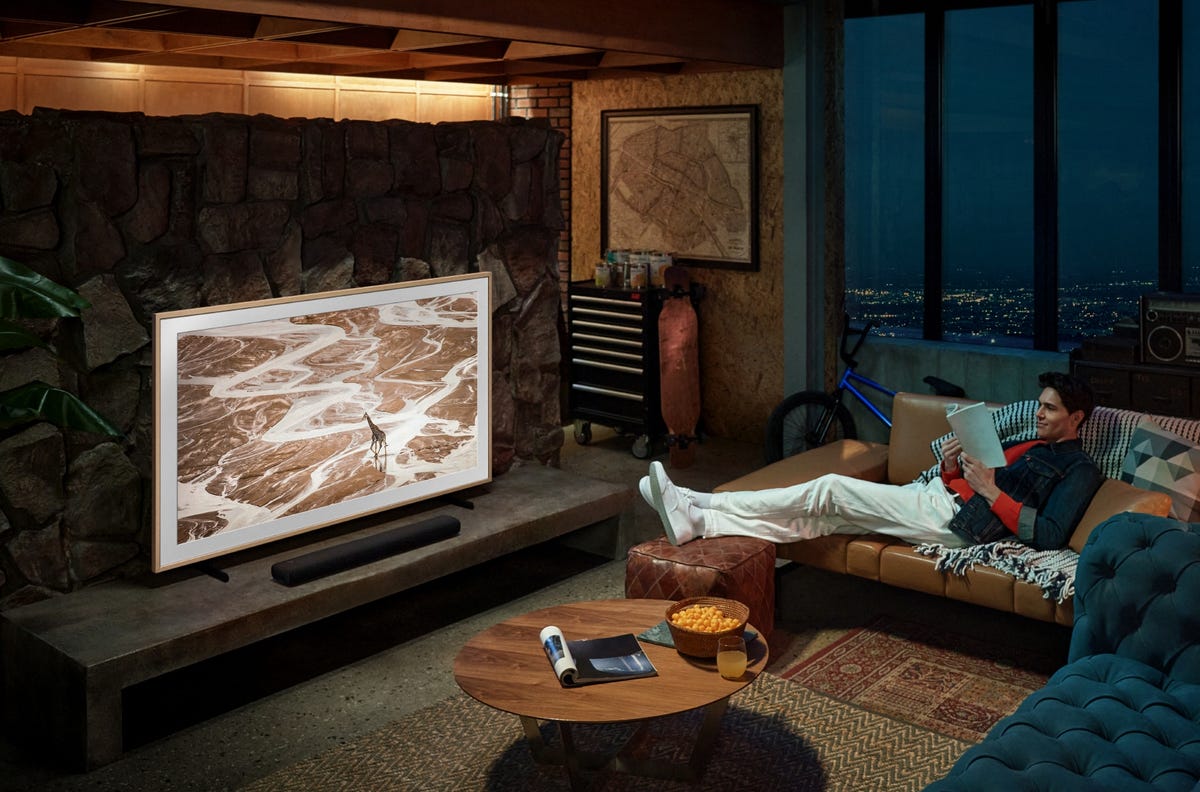So you’re in the market for a new TV — probably replacing an older model — and you want to get the best performance for the least amount of money. If you want the latest and greatest, you’re probably already set on a 2024 model. TVs do improve every year, with enhanced performance and often some new features.
That’s great, but obviously the trade-off is that you will be paying a premium. It’s also worth noting that screen types such as LCD and even OLED are mature technologies. That is, the differences between last year’s TVs and this year’s are not always as big as you might think.
But do you need to upgrade at all? Also, how do you choose between the best picture and features or the best price? Read on, we’re here to help.

LG’s 97-inch wireless M3 OLED TV.
If I buy a 2023 model in 2024, what new features am I missing?
For the most part, a 2023 TV at a given size or price will generally have similar picture quality and features to its 2024 counterparts. Could you see a difference if you put them side-by-side? Maybe, but it won’t be a huge difference. Considering how much cheaper you can get 2023 models in 2024, that potential difference might not seem important.
There’s always something new around the corner, but changes from year to year are usually incremental. If you worry about missing out on the very latest tech, it should give you peace of mind that even if something really new hits the market, it’s going to be extremely expensive.
One good example recently is wireless HDMI transmission, which LG introduced last year on its highest-end OLED TVs. Wireless HDMI allows you to plug devices – like game consoles and cable boxes – into a separate box across the room, as opposed to into the TV itself, and transmit their audio and video signals without wires to the TV (which, notably, still needs a power cord). It’s a cool technology, but LG’s cheapest TV with wireless HDMI, the 77-inch M3, costs $4,500. The nonwireless version, the 77-inch G3, is $3,500. Note that a new version, the LG M4, is coming soon and will likely be less expensive (in part because it has a smaller, 65-inch option), but we still expect a hefty premium over the nonwireless equivalent.

Mini-LED TVs are also on the rise and could deliver close-to-OLED picture quality. In 2023, TCL’s QM8 earned our top TV pick by offering mini-LEDs and full-array local dimming for a relatively affordable price, currently just over $1,000.
Also rolling out across the country is NextGen TV, aka ATSC 3.0. This is free, over-the-air 4K TV, and it’s moving forward quite quickly — it might already be available in your city. So far in 2024, we’ve seen more TVs with built-in tuners that cost less than ever. Don’t feel you need to rush to upgrade or get those specific models, however, since in the worst case you’ll be able to buy a cheap external tuner and connect that to your TV.

Watch this: Best TVs of 2023: From High-End to Budget, to the Price-to-Picture Sweet Spot
Do I need to upgrade?
Forget all the new tech. If your TV works and you’re happy with it, keep it. Don’t feel any pressure to upgrade.
Modern TVs are, on average, brighter and have better picture quality than the TVs from a few years ago. Unless you’re the type of videophile who wants to tweak every setting and fixates on nits and color accuracy, however, you probably don’t need a new TV.
The pressure to upgrade is pervasive in our tech culture, but TVs tend to last (and be perfectly functional) longer than most devices. They don’t, for example, have batteries that lose capacity like mobile phones — or have external wires that wear out like headphones. A TV from five or even 10 years ago likely works fine, though it might not look as good as the current 4K HDR TVs. So again, if that’s not a huge deal for you, you can likely keep what you have for a few more years.
Read more: Best TVs for PS5 and Xbox Series X, Series S
This is even true when considering the latest consoles, the PlayStation 5 and Xbox Series X. If you’ve got a PS4, Xbox One or any console connected via HDMI, the new consoles should work fine. They might look better on a new TV, but they’ll still look great on yours.
If your TV is having issues, or you just want something larger, that’s a different story. New TVs are much cheaper per inch than TVs of the past. You’ll be able to replace your current TV with something the same size, that looks better and is cheaper than your old TV. Or you can pay the same amount as your old TV and get something far bigger.
When is the best time to buy a TV?
First, It’s worth considering the annual television pricing cycle. Everything starts with CES in January, when new TVs (plus other tech like laptops and car technology) are announced for the coming year. Later, in the spring and summer, most of the new models become available and at the highest price they’ll ever likely be. Meanwhile, manufacturers and retailers want to get rid of the old models, so they’ll offer deep discounts on last year’s TVs during this time.
TV sales are the biggest in the fall and culminate at Black Friday and Cyber Monday. There are always some incredibly cheap 4K TVs on offer, but that’s not the whole story.
First of all, the TVs that get the huge discounts are usually either no-name brands, or low-end models from name brands. They’re fine if you just want a cheap TV, but they’re not going to offer the picture quality of an even slightly higher-end model. The best TVs go on sale as well, but deep discounts on those are less common.

TV sales happen all year, but Black Friday season sees the biggest discounts.
Second, massive discounts on TVs are rare in general. It might be counterintuitive, but TVs typically don’t have much markup. There isn’t a lot of profit in a $500 TV. So unless the store is trying to clear out stock, you shouldn’t expect a gigantic drop in price, even during sales. Plenty of good discounts are available, they’re just not going to be “50% off” or similar, unless there’s a specific reason that model is getting such an extreme discount. Or it’s a doorbuster in limited quantities.
Third, most big companies don’t allow stores to offer their own pricing. This is called unilateral pricing policy, or UPP. It means that a TV from that company is going to cost the same, whether it’s on Amazon, at Best Buy, or anywhere else. Well, anywhere else that wants to continue selling TVs from that company. If this sounds sketchy, it is, but that’s a topic for a different article.

The Samsung Frame may look sophisticated, but your current TV might work just as well.
All in all, is it worth upgrading my TV at all?
Here’s the short version:
Get a new TV now if:
- Your current TV is having issues, or is too old to connect to a streaming service like Netflix.
- You’re willing to buy from a place that has a price-match policy, in case there’s a sale.
- You want something bigger than what you have now.
Don’t get a TV now if:
- Your current TV works fine.
- There’s literally anything else you need or want to spend money on.
If you’ve got the itch for something new, but you’re still on the fence, consider giving your TV a bit of a makeover. If you’ve never adjusted the settings, it’s easy to do and will probably make your TV look better than it ever has. That might tide you over for a bit.
And if you finally decide that, yes, you’re ready to buy a new TV now, for the best deal choose last year’s model. For more information, we at CNET have some guidelines and also suggested models from 2024.
Editors’ note: This story was first published in 2019 but is regularly updated with new info.
As well as covering TV and other display tech, Geoff does photo tours of cool museums and locations around the world, including nuclear submarines, massive aircraft carriers, medieval castles, epic 10,000-mile road trips and more. Check out Tech Treks for all his tours and adventures.
He wrote a bestselling sci-fi novel about city-size submarines and a sequel. You can follow his adventures on Instagram and his YouTube channel.




















+ There are no comments
Add yours